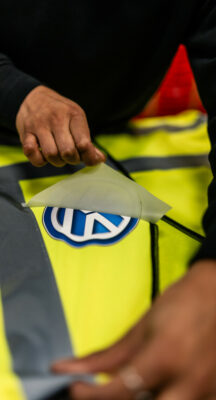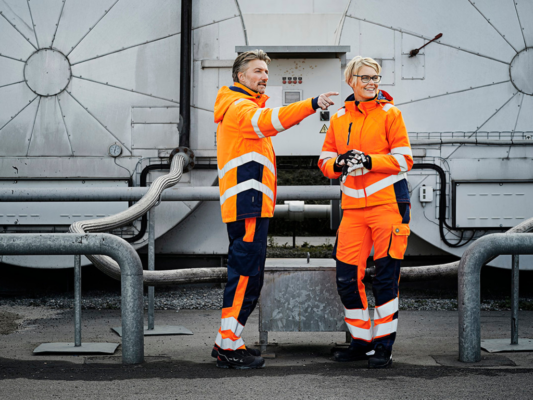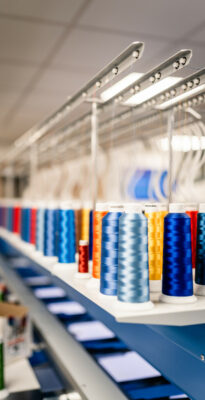No products in the basket.
Decisions, decisions…
You have decided that it is time to upgrade your corporate image, and you are on the cusp of placing your order for customised clothing which will promote your brand and enhance your image in the marketplace!
But you have to decide on which method you would like your logo applied to your garments, and you’re not sure which one to choose.
Embroidery and heat seal are two very different applications, with different elements to consider, so there are pros and cons for both.
Embroidery
Embroidery as a craft has been practiced for thousands of years, and was traditionally undertaken by hand. Modern techniques now mean the process is largely automated, enabling intricate designs to be created on textiles with precision, speed, and consistency.
The embroidery process is particularly effective when you are looking for a sophisticated way of adding branding to traditional uniform items. It offers a classic finish that augments the look associated with premium branding, and, due to the strength of stitch to material, can withstand years of wear and washing!
The embroidery option is a great way of making certain your design or logo not only looks distinguished but also helps it to really stand out and catch the eye, ideal for corporate wear such as caps and polo shirts.
The very process of stitching however, can have a limiting affect on the ability to the portray superfine and complex detail. Another consideration is the actual material being stitched, as if it is too delicate or lightweight, there is a risk of the stitching warping the cloth.
Finally, be mindful of the increasing cost implications associated with the higher stitch counts (although high volume runs can bring economies of scale).
Heat Seal Application

Heat seal, by contrast, is a more versatile platform enabling a wider variety and complexity of design and colour, which can be used on a broader range of materials, over a larger area of the garment. The process provides a consistently crisp and dynamic look and feel, and there is also a heightened vibrancy of the graphics achievable.
It is simple to print photographs on tee shirts, as an example, providing a finish that combines visual clarity with impactful imagery. Heat seal will often, but not always, prove to be is the more cost effective option when customising a large quantity of garments.
Longevity, however, can be a potential issue, with the design more susceptible to peeling and fading, and some materials do not lend themselves to the printing process – such as fleece or other highly textured fabrics.
Lightweight garments such as tee shirts or high-vis vests, for example, are ideal for printing on. Wording such as ‘Fire Marshall’ and ‘First Aider’ are often added to the back of garments as badges to differentiate between job roles or uses.
Therefore, in deciding which method to employ, evaluate the reason WHY you are customising the apparel. If it is for a specific promotional event (a company golf day for example), you would almost certainly look to get the garments printed.
If you need a few thousand hi vis jackets to keep your team conspicuous and safe on site, printing is definitely the way to go!
But perhaps you are looking to make a strong investment in your brand with a corporate uniform that can be worn in the busy months or years ahead. In that case you need to get your garments embroidered.
What Next?
If you’re considering a branded uniform rollout for your team and need some advice, reach out to one of our team members who will be very happy to help. If you need more information about how Clad Safety can transform your purchasing processes into a smooth procurement system, get in touch – and we’ll show you how.





